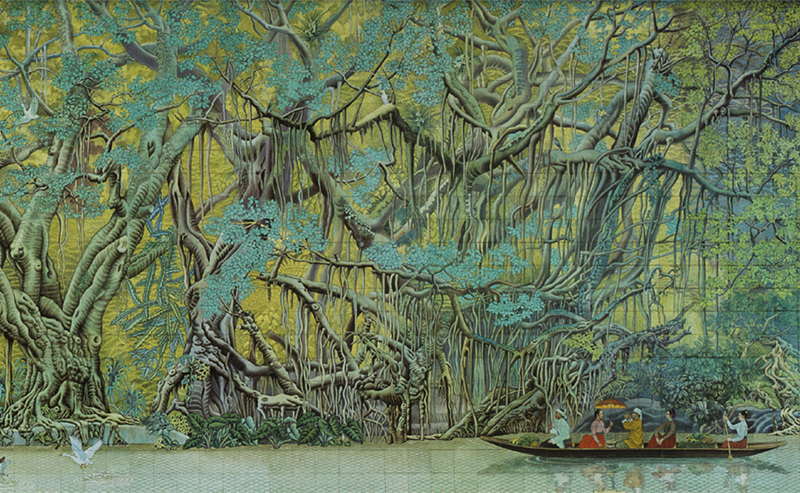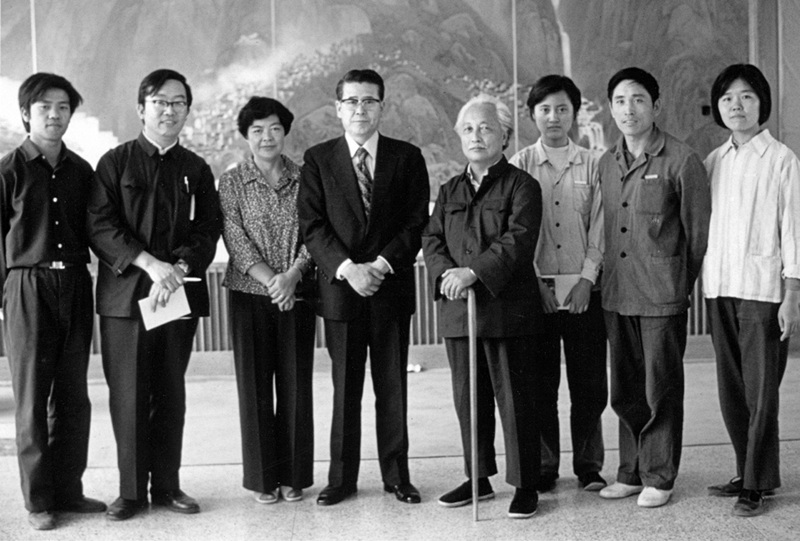Modern-day 'Mogao Grottoes' hidden in Beijing airport
- By Zhang Rui
 0 Comment(s)
0 Comment(s) Print
Print E-mail China.org.cn, April 1, 2021
E-mail China.org.cn, April 1, 2021
Cultural impact

Du Dakai, another prominent professor at AADTHU, also participated in the airport project, assisting artist Zhu Danian. "When the murals were all finished, I could feel the shockwaves," he said, noting that many people made the trip out to view the artworks, despite the airport's remote location. A detail from the mural "Song of the Forest," created by Zhu, was later featured on the cover of an art textbook for China's high school.
Du remembered a visit to the airport by Kuwabara Sumio, a renowned Japanese art critic and scholar: "He said, 'This is the spring of China; a new era has come.'"
The artworks at Beijing Capital International Airport have influenced generations of Chinese artists, as well as serving as an aesthetic education for domestic and foreign travelers, acting as symbols of Chinese culture, and representing China's reform and opening-up.

Artist Yuan Yunsheng painted female nudes in a mural portraying the Dai ethnic minority's Water-Sprinkling Festival - a remarkable feat at a time when Chinese society was relatively conservative.
Henry Fok Ying-tung, the late Hong Kong-based tycoon, once recalled: "At that time, when investing in the mainland, we always feared policy changes. Every time I went to Beijing, I had to see if the mural was still there. If it was, my heart would be more secure."






Go to Forum >>0 Comment(s)